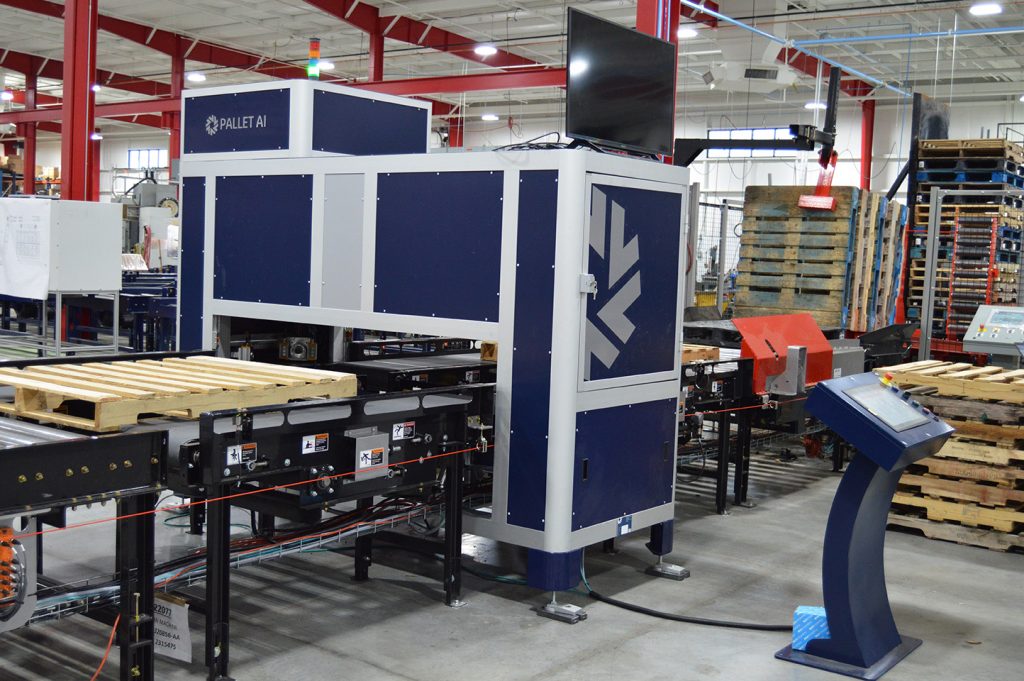PALLET INSPECTION SOLUTIONS
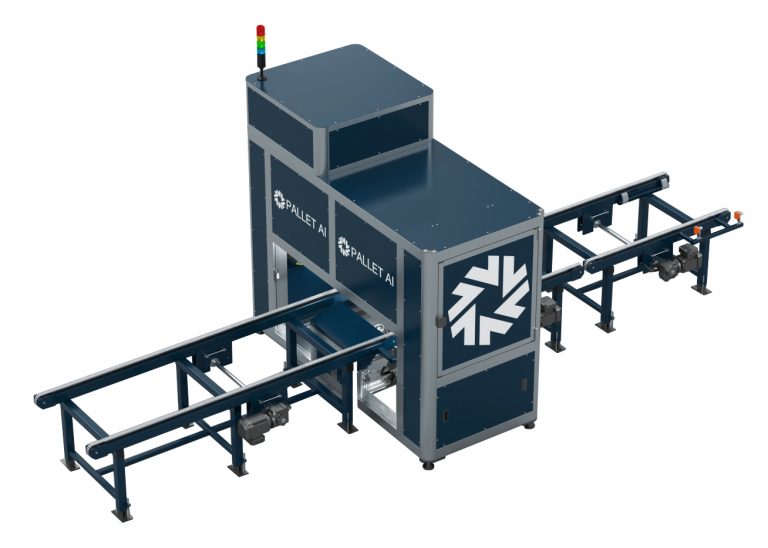
PALLETAI
Click here to learn more

PALLETAI - The CAB
Click here to learn more

Our pallet inspection system, is an ingenious solution for logistics success. PALLETAI inspects each pallet to detect defects that will impact your production or logistics chain. PALLETAI enables you to focus on uptime, production, efficiency, logistics, and employee safety.
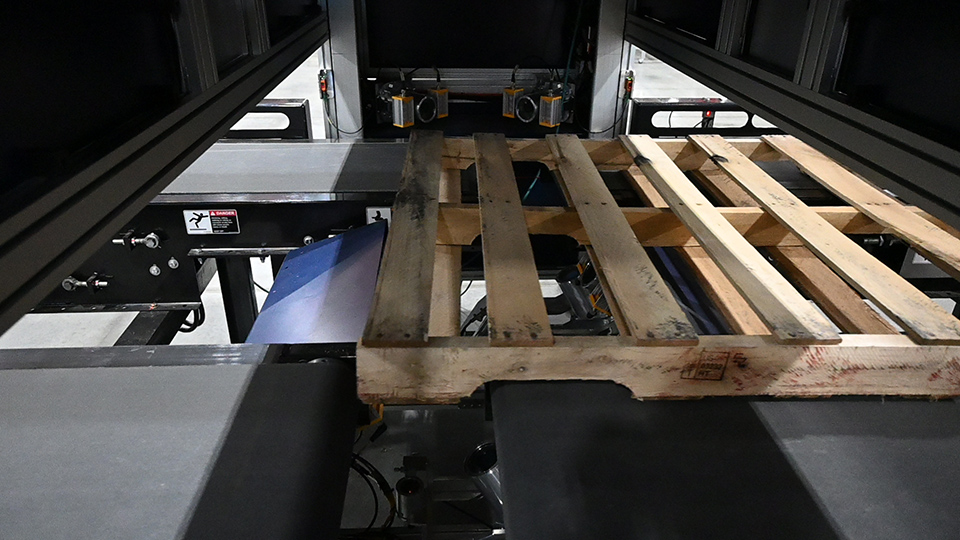
Optimize Efficiency and Quality with Pallet Inspection
Secure your pallets
Save money
Smaller footprint impact
Unlimited uptime
Increased Capacity
Collect data

Pallet Inspection
- Mixed size pallets: 30”x 30” to 60”X 60”
- Pallet orientation: compatible for long side, short side & side leading
- Preset recipes with 90 adjustable parameters
- 16 Cameras
- 175 images of each pallet
- 1,000 pictures per second
- 15,000 measurements
- Scan 2X per millimeter
- 6 second scan time
- Pallets per hour: dependent on size of the solution

Flexible, scalable, and modular pallet inspection solution
- Adaptable to your existing production line or can be assembled as a stand-alone soring cell
- Delivers improved quality levels compared to mechanical checking systems, while allowing more pallet types in the same machine with fewer maintenance needs
- Alleviates the burden of sorting pallets, liberating limited resources from this rigorous task. By enhancing pallet quality, it minimizes the occurrence of claims or damaged goods resulting from defective or worn-out pallets, making the workload considerably lighter
PALLETAI enables scalable production and assures high-speed inspection, rejection and sorting based on defect type such as protruding nails, cracks in boards & blocks, missing, broken or dislocated boards or blocks, blocked tunnels, logo detection and verification (including iPAL QR codes etc.), paper and plastic residue and sorting based on appearance.
PALLETAI – The CAB
The CAB is an inbound solution that offers:
- Bottom side inspection integrates into existing infeed conveyors, inspecting with goods on top
- Inspection at major trunk into AS/RS or distributed camera setup over multiple infeeds
- Compares pallet quality & type to the invoice, enabling chargeback to the supplier
- Keeps track of pallet inventory (pooling assets)

INSPECTION & SORTING SOLUTIONS
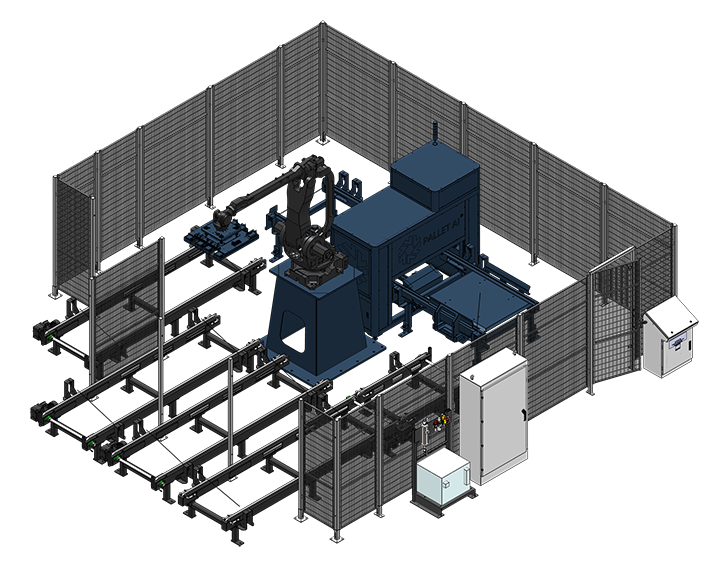
Single Robot - 1 in 3 out
- Turnkey solution for pallet inspection
- The PALLETAI can be set up as a stand alone sorting cell or fully integrated into your existing production line
- Minimal space requirements (less than 50 m2)
- Speed up to 250 pallets per hour
- Insource the sorting process to allow savings on managed recovery pallets
- Robot decreases jams.
- Robot’s pick and place function increases uptime
- Up to three outbound stacks with various requirements
- Real-time data and monitoring
- Up to 20 minutes of unsupervised sorting
- Increased safety with safety fence
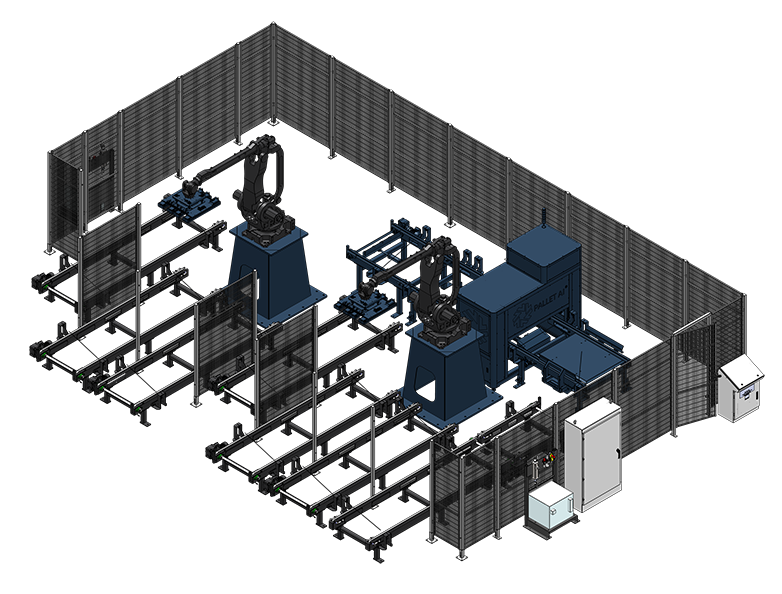
Double Robot - 1 in 6 out
- A turnkey solution with great flexibility in handling a variety of pallets and sorting fractions
- The option to retrofit the PALLETAI into an existing production/sorting line or use it as a standalone sorting cell
- Speed of up to 325 pallets per hour
- Increased safety with safety fence
- Real-time data and monitoring
- Up to 30 minutes of unsupervised sorting
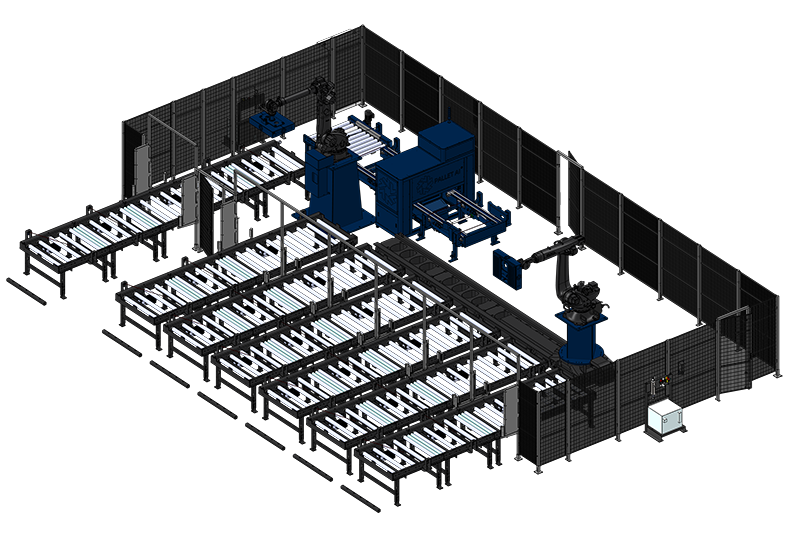
Double Robot, Track Motion - 1 in 6 out
- A turnkey solution with great flexibility in handling a variety of pallets and sorting fractions
- The PALLETAI can be set up a stand alone sorting cell or fully integrated into your existing production line
- Speed of up to 325 pallets per hour
- Increased safety with safety fence
- Real-time data and monitoring
- Up to 30 minutes of unsupervised sorting
VIDEO LIBRARY
Pallet Inspection Playlist
Pallet Inspection FAQ
Weekly maintenance consists of wiping down the camera housings. These are over pressured and have pneumatic air cleaning, but may require an extra wipe down in very dirty environments.
Yes, so long as the physical space to insert the machine is available along with conveyors. A minimum of 9 feet in length is required for the inspection unit.
As it operates basically without moving parts, there are few things that can be damaged from wear and tear. The camera housings are over pressurized to keep dust and dirt out. We also have cleaning of the camera housings which are especially exposed.
Most likely yes. We can adapt the machine and software to nearly any pallet configuration imaginable. Reach out to us to discuss more.
The idea is to reject only pallets which are not good. It could be that more pallets are rejected as they are not identified today. We tailor the system so that problematic or potentially problematic pallets are rejected.
Yes, we can set the system up in a way so that a pallet can have different quality grades each with different sorting criteria.
Yes, we have the ability and competence to supply a complete turnkey solution including conveyors, robots and other material handling equipment.
Alliance offers support agreements which ensure rapid response, both in person and remote. Is the system reliable – we normally use a mechanical pressure system to test the pallet.
The vision based system is able to detect the same and more defects as a mechanical system can detect. A mechanical system has variations and less ability to find challenging defects like cracks in boards around nails etc, which we find with ease.
Theoretically, there’s no upper limitation to how many pallet types can go through the machine. So long as we can make them physically fit in the machine it is possible to inspect them.
New pallet types can be added remotely to the system for a fee.
- The power supply needed is 3X380-480VAC (3-phase and ground), 16A Compressed Air Supply requirement is min 90 psi and 7 cfm at air preparation unit.
- Hose connector supplied is ½” hose.
Dirty, dusty, oily, or wet pallets do not need to be cleaned before being inspected. Anything that obstructs the camera such as snow, plastic wrap, and cardboard would need to be removed so the camera can inspect the pallet.
PALLET TYPES
GMA Whitewood
Winged
Stringer
Flushed
Block Style Pallets
Chep/Peco
Whitewood
Euro
Detection/Recognition
Size and Color
OTP
Plastic
Defect Analysis for GMA – Whitewood & Block Style
- Overall length, width & height
- All stringers & runners are in place
- Tunnels are correct
- Cracks and material loss of top & bottom deck boards
- Significant cracks & material loss in stringers & runners
- Alignment of stringers & runners
- Delta low & high points
- Nail/staples presence & protrusion
- Plugs and repairs to stringers
- Logo detection
- Board distance to edge
- Board distance between top boards
- Blocks correctly positioned and in place
- Material loss in blocks
- Block rotation
- Block protrusion
- Alignment of bottom deck boards
- Connector board cracks and material loss
